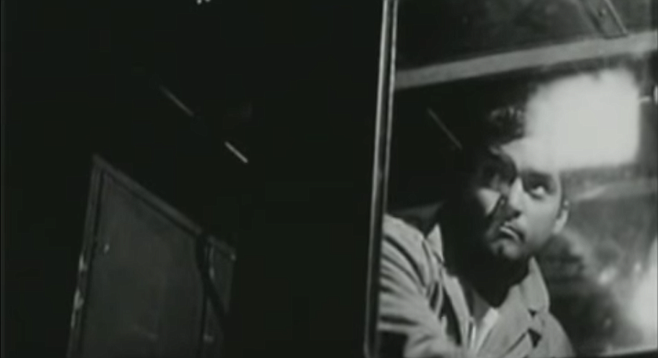 Facebook
Facebook
 X
X
 Instagram
Instagram
 TikTok
TikTok
 Youtube
Youtube

Modern Times would have to wait. No sooner did the DVD of Chaplin’s immortal comedy come off the shelf then I found myself drawn to the contents of the supplementary disc. The documentaries, footage of Liberace serenading his TV audience with Chaplin’s best known theme song Smile, and one archival short in particular proved impossible to resist.
Por Primera Vez (For the First Time) hit like a bolt of joy. For nine minutes I watched, enraptured, as filmmaker Octavio Cortázar followed a mobile cinema crew that brought movies to a corner of the globe heretofore oblivious to the art of the moving image.
Cinema exhibition began when Auguste and Louis Lumiere first positioned their equipment in a public square, strung up a sheet, and gave the projector a crank. Technology had advanced to the point where the crew in this 1967 short had all of the equipment needed – plus a bed, in case of layovers – contained in the back of a truck. “Our truck is both our workplace and our home,” noted one of the projectionists. “We work and live in it 26 days a month.”
Their destination is Baracoa, a mountain range located in the Guantánamo Province of eastern Cuba where the majority of the 100 locals in attendance have never seen an image projected on a screen.

There’s a moment in Preston Sturges’s Sullivan’s Travels where a group of convicts are escorted to a Baptist church in the rural south. There, the men set down their shackles long enough to take in a Mickey Mouse cartoon (and match the parishioners laugh-for-laugh). Nothing hammers home the importance of shared laughter quite like watching the jubilant reaction of the crowd.
The villagers in Por Primera Vez offer a documentary counterpart to Sturges’s church. The look of delight on their faces as they watch Chaplin pirouette across the screen says it all. One could just as easily have done without a curtain subtitle proclaiming, "A movie is a beautiful and important thing," but I’m glad it was there.


Modern Times would have to wait. No sooner did the DVD of Chaplin’s immortal comedy come off the shelf then I found myself drawn to the contents of the supplementary disc. The documentaries, footage of Liberace serenading his TV audience with Chaplin’s best known theme song Smile, and one archival short in particular proved impossible to resist.
Por Primera Vez (For the First Time) hit like a bolt of joy. For nine minutes I watched, enraptured, as filmmaker Octavio Cortázar followed a mobile cinema crew that brought movies to a corner of the globe heretofore oblivious to the art of the moving image.
Cinema exhibition began when Auguste and Louis Lumiere first positioned their equipment in a public square, strung up a sheet, and gave the projector a crank. Technology had advanced to the point where the crew in this 1967 short had all of the equipment needed – plus a bed, in case of layovers – contained in the back of a truck. “Our truck is both our workplace and our home,” noted one of the projectionists. “We work and live in it 26 days a month.”
Their destination is Baracoa, a mountain range located in the Guantánamo Province of eastern Cuba where the majority of the 100 locals in attendance have never seen an image projected on a screen.

There’s a moment in Preston Sturges’s Sullivan’s Travels where a group of convicts are escorted to a Baptist church in the rural south. There, the men set down their shackles long enough to take in a Mickey Mouse cartoon (and match the parishioners laugh-for-laugh). Nothing hammers home the importance of shared laughter quite like watching the jubilant reaction of the crowd.
The villagers in Por Primera Vez offer a documentary counterpart to Sturges’s church. The look of delight on their faces as they watch Chaplin pirouette across the screen says it all. One could just as easily have done without a curtain subtitle proclaiming, "A movie is a beautiful and important thing," but I’m glad it was there.
Comments